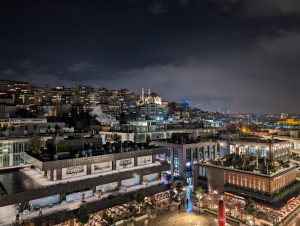The United States Department of Homeland Security (DHS) says that the U.S. Customs and Border Protection (CBP) is planning to implement biometric exit technology in almost all commercial airports in the next four years.
This technology rollout was outlined in the department’s “Fiscal Year 2018 Entry/Exit Overstay Report.” It states that in the next four years, CBP hopes to use airlines/tsa-to-expand-biometrics-technology-to-airport-security.html” target=”_self” rel=”nofollow noopener noreferrer”>biometric exit technology on more than 97 percent of commercial air travelers departing from the U.S.with the intent of catching people who have overstayed their visa.
MORE Airlines & Airports
As of September 2018, airlines/biometric-facial-recognition-technology-piloted-at-lax.html” target=”_self” rel=”nofollow noopener noreferrer”>there were only 15 U.S. airports with this facial-recognition technology, and of those 15 airports, this technology has been used on over two million passengers with 7,000 of those travelers found to have overstayed their visa.
Currently, CBP checks visas via biographic manifest data or their name and passport number at most airports. However, they believe the biometric system would be more efficient, claiming it has a 98 percent match rate. With this match rate, CBP says they’ve received “many commitment letters from airport authorities and/or air carriers supporting biometric exit operations.”
Even though CBP and DHS claim that the data has a 98 percent match rate, some argue that’s not actually the case. Facial recognition technology has consistently been reported not to work very well for people of color, as proven by a test that the ACLU did in 2018 in which the technology incorrectly matched 28 members of Congress and identified them as people who had committed crimes. The false matches were “disproportionately people of color.”
That experiment is backed up by a report by the CAPA-Centre for Aviation, which found that facial recognition software “is not so good at identifying ethnic minorities when most of the subjects used in training the technology were from the majority group.” Glasses, hats, scarves and changes in appearance like facial hair or weight loss or gain can also affect the quality of readings.
Others note that regardless of efficiency, such systems are invasive and violate travelers’ privacy rights.
Regardless of the real concerns surrounding racial bias and privacy rights in connection with biometric exit technology, it seems like CBP will most likely move forward with the technology.























